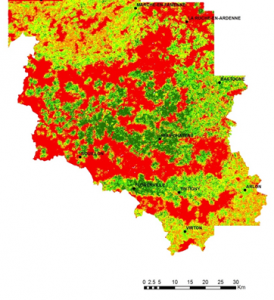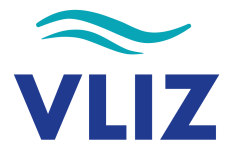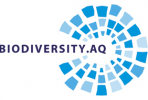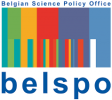You are here
The Belgian LifeWatch Infrastructure
The Belgian LifeWatch project is part of the European LifeWatch infrastructure. LifeWatch was established as part of the European Strategy Forum on Research Infrastructure (ESFRI) and can be seen as a virtual laboratory for biodiversity research. Belgium contributes to LifeWatch with varied and complementary "in-kind" contributions. These are implemented under the form of long lasting projects by different research centers and universities spread over the country and supported by each respective political authority.
Flanders
The Flemish contributions to LifeWatch are coordinated by the Flanders Marine Institute (VLIZ, marine part) and the Research Institute for Nature and Forest (INBO, freshwater and terrestrial part). This Flemish LifeWatch consortium is funded through FWO (Research Foundation Flanders/Fonds Wetenschappelijk Onderzoek) (formerly through the Hercules Foundation).
Flanders supports VLIZ to build a central Species Information Backbone (LW-SIBb) to facilitate the standardization of species data and the integration of the distributed biodiversity facilities. The LW-SIBb includes species information services (taxonomy access services, a taxonomic editing environment, species occurrence services and catalogue services) and brings together different component databases and data systems. Next to taxonomic information (taxonomic databases, species registers and nomenclatures), the LW-SIBb will also include biogeographical data (species observations), ecological data (traits), genomic data and links to the available literature.
Furthermore VLIZ and INBO are also constructing a local marine-freshwater-terrestrial LifeWatch observatory. One of the first achievements within this observatory is the set up of a GPS sensor network for large birds: the GPS tags are generating data since June 2013 and already revealed some interesting behavior and strange migration patterns. Furthermore, an acoustic fish receiver network is being set up in rivers and estuaries and in the Belgian part of the North Sea (BPNS). Numerous other sensors were purchased and made operational: a flow cytometer (to track real-time abundance, dynamics and distribution of phytoplankton in the BPNS), a ZooScan and Video Plankton Recorder (to identify and track zooplankton), and Unmanned Aerial System (UAS, to monitor Natura2000 habitats in Flanders), a bird radar (to register flight patterns of birds and bats), and many more.
VLIZ and INBO also facilitate access to several databases and data systems through data services, data publication and data archeology activities.
Wallonia-Brussels
In the framework of LifeWatch, the Wallonia-Brussels Federation is financing a collaborative research program between scientists of the Earth and Life Institute (Université catholique de Louvain) and the Biosystems Engineering Department (Université de Liège/Gembloux-ABT). The LifeWatch Wallonia-Brussels team has a strong experience in two complementary research fields: (i) land cover and land use mapping through integrated GIS analysis and remote sensing image analysis and (ii) biodiversity, ecosystem services and landscape ecology.
This project is based on the fact that a major concern for biodiversity and ecosystem research is the difficulty to find and select the right biophysical dataset (e.g. climatic, land cover) in a standardized format to describe the environment. Most existing geographic datasets either lack precision, accuracy or coherence at the European scale. A single entry point to standard and ready-to use geographic datasets is thus needed.
The strategic focus of the LifeWatch Wallonia-Brussels team is therefore to develop and gather geographic datasets about European biotic and abiotic factors.
 Since the beginning of the project, a database describing homogeneous units of the landscape, so-called ecotopes, was developed for Belgium. Each ecotope is described by percentages of land use and a combination of topographic, contextual, climate and ecosystem dynamics variables, based on aerial and satellite images. These data are then used to develop models for the description of habitats and for predicting the potential ranges of different animal species (Figure 1).
Since the beginning of the project, a database describing homogeneous units of the landscape, so-called ecotopes, was developed for Belgium. Each ecotope is described by percentages of land use and a combination of topographic, contextual, climate and ecosystem dynamics variables, based on aerial and satellite images. These data are then used to develop models for the description of habitats and for predicting the potential ranges of different animal species (Figure 1).
A second ongoing project is the monitoring and synthesis of ecosystem dynamic descriptors. Four variables are studied by satellite images: vegetation phenology, sunshine radiation, snow cover probability and fire occurrence. The weekly average profiles of these time series are calculated at an European scale, together with the Climate Change Initiative Land Cover team of UcL. From these average profiles, anomalies can be highlighted as well. These data can be viewed and downloaded from a geoportal. Moreover, every six months, a bulletin about the ecosystem dynamics is published. It highlights important events and anomalies and links them to ecological processes.
Figure. Potential very suitable habitat (dark green) to potential very unsuitable habitat (bright red) for the fieldfare (Turdus pilaris) in southern Belgium.
Federal
The Federal contribution to LifeWatch is coordinated by the Royal Belgian Institute of Natural Sciences (RBINS). RBINS guides the development of an Antarctic Biodiversity Information System (AntaBIS) as a LifeWatch virtual laboratory. It is the intention to provide the necessary tools for biodiversity and ecosystem studies of the Antarctic through the LifeWatch infrastructure. The multi-authored Biogeographic Atlas of the Southern Ocean (iATLAS), is based on information networks and their collaborative communities to provide an up-to-date synthesis of the Antarctic biogeographic knowledge. The team will build upon the Antarctic Register of Marine Species (RAMS), and the Antarctic OBIS node (SCAR-MarBIN) to develop a dynamic version of the atlas. This dynamic version will give birth to a new interoperable system, building customized biogeographic synthesis pages on-the-fly, using the content of relevant information systems.
A second project under the guidance of RBINS and in collaboration with the Royal Museum for Central Africa (RMCA) is the development of a Barcoding facility for Organisms and tissues of Policy Concern (BopCo). This project aims to set up a virtual laboratory and network that will enable to identify unknown biological material up to species/population level, using molecular techniques. DNA barcoding has become a reliable and rapid method to provide identifications even when only small parts of organisms are available. The main focus here is on species with societal relevance and of policy concern (e.g. species of relevance to CITES, invasive alien species…) for which a substantial number of barcodes are already available. Based on the identifications, the status of the organism can be evaluated against existing regulations. The virtual laboratory will rely on know-how and information developed in large European taxonomic facilities, including the Belgian federal scientific institutions. It will rely to an important extent on the valuable collections housed in these institutions for the development of a set of DNA barcode standard. BopCo was funded as a LifeWatch contribution until 2022.
The federal authority also supports the Belgian Biodiversity Platform to set-up and animate a LifeWatch scientific node.
The federal contributions are funded by Belspo. Belspo will also fund the Belgian contribution to the LifeWatch ERIC.

![]()










